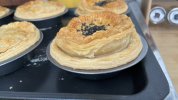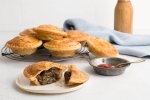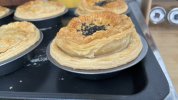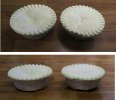- Joined
- Aug 26, 2022
- Messages
- 6
- Reaction score
- 1
Hi there fellow bakers. This is my first post here so sorry if it's been discussed before. I'm having trouble with shrinking pastry while making meat pies. The puff pastry tops always seem to shrink in the oven and break their seal. Any ideas what might be causing this? Here is what I'm using and my ratios.
• 200g Anchor butter
• 250g French T45 flour
• Pinch salt
• 75mls cold water (approx)
I'm rolling it out and doing 2 folds, then baking in a convection oven @180*C (355 Fahrenheit)
Any tips would be greatly appreciated
• 200g Anchor butter
• 250g French T45 flour
• Pinch salt
• 75mls cold water (approx)
I'm rolling it out and doing 2 folds, then baking in a convection oven @180*C (355 Fahrenheit)
Any tips would be greatly appreciated




